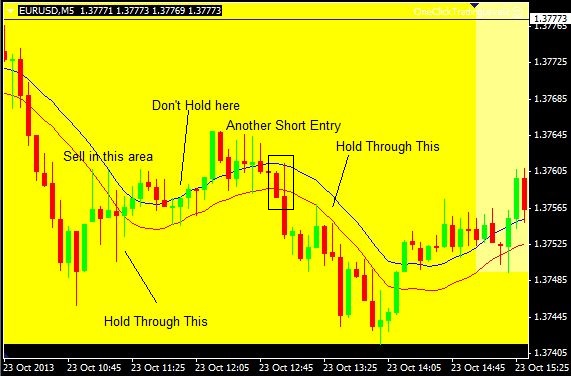Should I Hold Through a Pullback, or Get Out? – Part 1
Place a few trades and you’ll invariably ask yourself this question at some point. Say you buy the EUR/USD at 1.3700 and have a price target at 1.3730. The price climbs to 1.3720 and then starts to reverse. Do you say “Close enough!” and take your profit, or do you allow the EUR/USD to pullback and then hit your target on the next run? While each circumstance is slightly different, there are some general guidelines which will help you decide.
Overall Strength
The strength of the trend is a significant determinant in if you should continue to hold your position, or get out. Pullbacks are a part of trading, but determining which ones to hold through is crucial. Since we need to control risk as well, we only want to stay in a trade if the pullback isn’t likely to hit our stop before the trend continues. While losing trades are a fact of trading, we can minimize the number of losers by always trading with price strength, and exiting when strength is no longer present.
Figure 1 shows a EUR/USD 5 minute chart as the European session begins. The price falls aggressively, so we are looking for a pullback in order sell/short, since our expectation is that price will keep falling.
Figure 1. EUR/USD 5 Minute Chart – European Session

Assume we enter short in the area marked “Sell in this area.” The price experiences a few back and forth bars, and then rallies for a few bars. We “Hold Through This” as the expectation is still to the downside. The price drops again (3 bars), but it can’t even make it to prior price low seen during the choppiness.
While the overall expectation is still to the downside, the fact the price can’t drop right now warns us a larger pullback is likely coming, so we “Don’t Hold here”. Instead we get out. Don’t wait for the target or stop to get hit, just take your small profit or small loss. At this point in time, there is no strength to the downside, and since we don’t know the future, we take that lack of strength as a sign to get out.
Since the price couldn’t drop it warned of a larger pullback (higher). This occurred shortly after as a big green bar moves above the former highs.
The price stalls again. Recall, the overall expectation is still down based on the large move down after the open. We just didn’t want to be in a short position on a strong pullback because at the time we had no idea just how far that pullback could go, or if the trend may even reverse.
The price rallies, and then pauses. Since the overall expectation is down, we look for another short entry. I have drawn a black rectangle around the bars that signal a short entry. These bars provided ample opportunity to get short.
The price starts to fall aggressively during and after the two bars in the rectangle, but then pauses. Since the overall trend is down, and now the short-term momentum is also down, we hold through this pullback and then exit on the next decline
Price Spikes
Strong price movement is one thing. Abnormally strong price movement–a price spike–sends a different signal. If a price spike occurs in the same direction as your trade, thank the market for the extra money and close the position as soon as there is any sign of a pullback. A price spike is often followed by a sharp reversal.
Figure 2 shows an abnormal price spike. Prior to the spike the price was moving higher nicely. If you were long there was no reason to exit based on the pullbacks seen to the left of the spike.
There is no rule for how much the price has to move within a certain time period to be considered a spike. But if you notice a bar (or more) that is drastically bigger than the bars around it during a major trading session, it is likely a spike.
Figure 2. EUR/USD 5 Minute Chart

Once the spike occurs, it is quite likely there will be some sort of pullback. The pullback may not retrace the entire spike, but it may retrace most of it or a significant portion of it. In the case above, the pullback retraced the entire spike plus some of the normal trend. Since we should never expect to be in a trade when an abnormal spike occurs (often due to news, and trading right be before news should be avoided), if we happen to be on the right side of one, we take the extra profit and close the position.
We cannot know how large the pullback will be when it occurs. The market has just shown us a volatile movement, so it is better to take the profit than to hold it through a correction which could take away all our profit. Remember, you can always get back into another trade once the pullback, big or small, occurs.
Summary
Reading overall strength is one of the most important concepts in trading. It will help you determine which trades to take, and which ones to get out of. There is a difference between strength and a spike though. We hold onto trades which are showing strength, but if a spike occurs we take the extra profit and get out at any sign of a pullback.
Deciding whether to get out of a trade or not will also rely on being able to tell when a trend is just consolidating–and then likely to continue–or if the trend is reversing. In hind-sight it is easy to a see a reversal, but in real-time making that determination takes practise. This is issue will be addressed in the next article: Should I Hold Through a Pullback, or Get Out? – Part 2